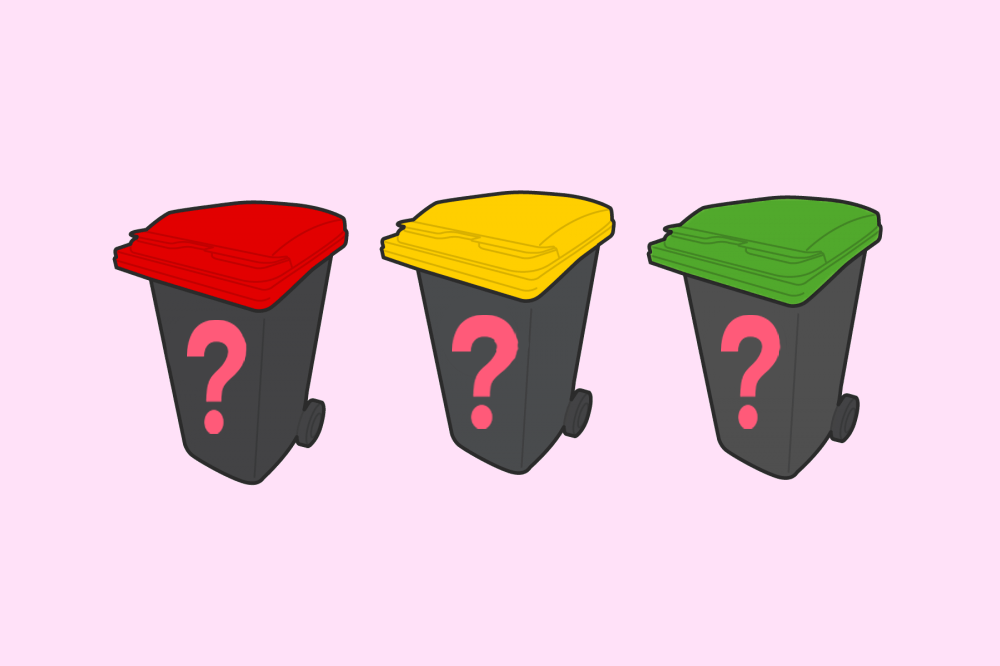As an international student, it may be difficult adapting and living in a new country. One of the things that you may be puzzled by is which colour bins to sort your waste into.
Unlike other countries, Australia has three bins for each household and they all serve different waste disposal purposes. If it is time to take out the trash and you’re still confused, feel at ease, we got your back. Here is a comprehensive guide to help you with all your trashy woes.
Green bins (organics)
Do you know what the green bins you always see on the streets are for? As the name suggests, the green wastes are used to toss our organic wastes. Examples of organic wastes are prunings and cuttings, small branches (up to 10 centimetres thick), lawn clippings, weeds, leaves, cut flowers, pet poos (but not in plastic bags), shredded papers, paper towels, tissues, and hair. However, the green bins are not for materials such as plastic bags, soil bags, gardening tools, or plant pots.
Red bin (waste)
The red bin is specifically for general household rubbish which cannot go into the green or yellow bin. This type of bin contains environmentally hazardous wastes such as nappies, clothing and rags, rope, garden hoses, broken glassware and crockery, polystyrene and foam packaging, meat, food trays, and bubble wrap. This type of waste takes extremely long to decompose and are the worst for the environment. Ensure that your waste is contained in a biodegradable bag to be environmentally conscious.
Yellow bin (recycling)
Yellow bins are reserved for recycling. Wastes which are normally produced such as clean paper, cardboard, glasses bottles and jars, any kinds of empty cans and lids, and plastics can be disposed of in this bin. After this waste is collected, they will be transferred into a high-tech machine, which has the ability to analyse and separate them into different types. After a series of disinfection processes, they will be moved into trucks and transported to different factories to be reprocessed for new products.
While you can not put soft plastics such as food wrappers and plastic bags into the yellow bin, there are ways to recycle them. Most supermarkets such as Coles and Woolworths have a bin out the front where you can drop off your soft plastics for recycling. Find the nearest location of a soft plastics recycling bin on the Redcycle website. Easy right?
Collection time
Before the authorities can collect your waste, you have to follow certain rules. Store your waste on your property until the night before collection day. Different councils have different collection days, so be sure to visit your council website to find out which coloured bins to take out and when.
On the night before, wheel your bin to the curb and leave it there for collection the next day. If you have more waste than your bin can fit, do not try to stuff it in and leave the lid off because they will not empty out overflowing bins.
Consider that waste sorted!
For more information on waste disposal in Victoria, please visit the City of Melbourne’s handy guide.
For more information on recycling and responsible waste disposal, visit Sustainability Victoria.
This story was produced by Media and Communication students at Trinity College Foundation Studies as part of Meld’s community newsroom collaboration. Education institutions, student clubs/societies and community groups interested in being involved can get in touch with us via meld@meldmagazine.com.au.


This is a very informative article. It is really important for an individual to be educated on how to segregate trash. It plays a vital role for us to have a greener future. Recently, we just purchased bins and waste containers from Ace Waste and it did not disappoint. The containers are labeled and colored accordingly, which can help us easily identify the kind off rubbish we throw in it. You can check their page here: https://www.acewaste.com.au/services/waste-containers/